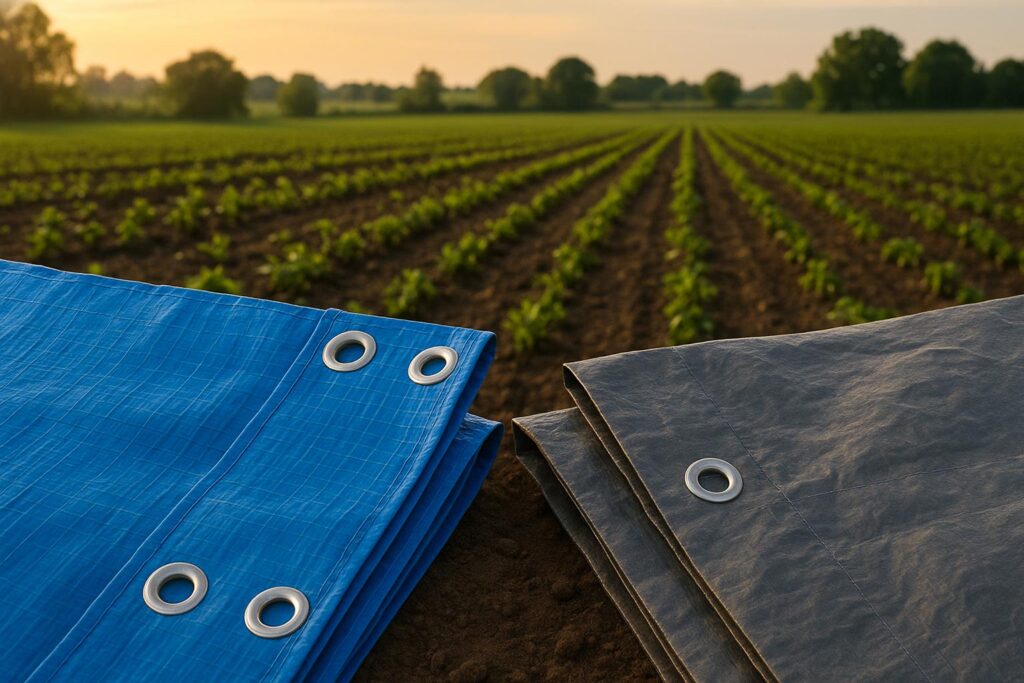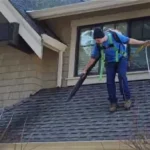When it comes to choosing the right tarpaulin, the options can seem deceptively simple. Yet, whether you’re covering farm equipment, lining a pond, protecting crops, or constructing a greenhouse, the wrong choice can lead to ripped edges, water leakage, UV damage, or repeated replacements. Two commonly used types are standard tarpaulins and reinforced tarpaulins. While they may look similar on the surface, they perform very differently under real-world conditions.
Understanding which offers better value requires more than just comparing upfront prices. You need to assess durability, application, long-term cost-effectiveness, and environmental resistance. This is where the nuances between reinforced and standard tarpaulins truly come into focus.
What Sets Standard Tarpaulins Apart?
Standard tarpaulins are typically made from polyethylene or PVC and designed for light to moderate usage. They are widely used in home improvement projects, temporary covers for vehicles, and short-term construction needs. While affordable and easy to handle, they lack the structural integrity required for heavy-duty applications.
In terms of features:
- They’re lightweight and easy to fold.
- Often include metal grommets for simple tie-downs.
However, standard tarpaulins are prone to tearing under tension or high wind exposure. They’re also more likely to degrade under prolonged UV exposure unless treated with a coating.
What Is a Reinforced Tarpaulin?
Reinforced tarpaulins are constructed using a base fabric that is layered and laminated with extra-strength materials, such as high-density polyethylene (HDPE) or woven scrim mesh. The internal weave provides them with added tensile strength and puncture resistance, making them ideal for demanding applications such as agriculture, construction, and long-term outdoor storage.
Unlike standard options, reinforced tarpaulins maintain structural integrity under strain. The edge binding and corner reinforcements help prevent fraying, while UV inhibitors extend their life in sunny environments.
This type of tarpaulin is particularly effective in applications involving liquid containment. For example, many farmers now prefer to purchase Pond Liner Tarpaulin instead of traditional liners, due to its extended lifespan, leak resistance, and compatibility with various soil types. Using reinforced tarpaulin for pond lining significantly reduces the risk of seepage and microbial breakdown, especially in high-alkaline or acidic environments.
Comparative Durability: Reinforced Wins the Long Game
The most frequently mentioned distinction between these two kinds is durability. In outdoor settings, standard tarpaulins can withstand wear and tear for six months to a year. On the other hand, depending on exposure to the environment, a properly kept reinforced tarpaulin can last anywhere from three to five years, or even longer.
In comparison to regular tarps, reinforced tarpaulins undergo up to 60% reduced tensile degradation after a 12-month UV exposure cycle, according to a number of studies, including one published in 2021 by the Polymer Materials Research Institute. This implies that even under intense rain, wind, or sun, they stay more intact.
“Quality means doing it right when no one is looking.” Henry Ford
Reinforced tarpaulins also handle edge tension better, which is a common failure point for standard versions. The layered or grid-reinforced design allows them to flex without cracking—ideal for windy areas or where tarps need to be repeatedly repositioned.
Weight vs. Strength: Don’t Be Fooled by Heft
Weight is another factor that can confuse. Many assume heavier tarps are stronger, but that’s not always true. A reinforced tarpaulin may actually be lighter yet significantly more durable due to its internal fabric structure. Standard tarps often rely on bulk to simulate durability, but once torn, they fail quickly.
The balance between weight and tear resistance is vital in mobile applications such as wrapping greenhouse frames or covering hay bales—where ease of installation is just as important as longevity.
Application-Based Performance
For Agriculture
Farmers need tarps that are resistant to wind, UV light, and chemicals. For pond lining, soil solarization, and silage cover, reinforced tarpaulins are incredibly effective. In contrast, standard tarps rarely persist through the entire growing season, though they might provide some early protection.
For Construction
Reinforced tarpaulins are standard on job sites as roof covers, scaffold wraps, or concrete curing blankets. Their ability to remain taut and resist tearing even when nailed or stretched makes them the preferred choice for safety and efficiency.
For Home Use
A simple tarp may be adequate if you’re just covering firewood or providing temporary shade. Users must be aware, nevertheless, that it can deteriorate rapidly, particularly if left outside during different seasons.
The cost-per-use study of tarp varieties provides a helpful breakdown for individuals assessing usage expenses, demonstrating how, despite greater initial prices, reinforced choices frequently outperform regular tarps over time.
Environmental and Chemical Resistance
Typically, chemical treatments are applied to reinforced tarpaulins to enhance their resistance to mould, water, and UV rays. These treatments extend the useful life and performance of tarps in areas where pesticides are frequently sprayed or where tarps come into direct contact with soil.
In contrast, regular exposure to chemicals, dampness, or freezing temperatures causes standard tarpaulins to flake or become brittle. If left unchecked, they may even contribute to the spread of mold in humid regions.
These days, some reinforced variants come with recyclable polymers and antibacterial coatings, which support sustainability objectives in environmentally sensitive operations.
Cost Comparison: Value Isn’t Always About Price
On the surface, standard tarpaulins cost less, sometimes as little as one-third of reinforced alternatives. But when you account for:
- Replacement frequency
- Potential damage to covered goods
- Maintenance or downtime due to failure
…reinforced tarpaulins emerge as the more economical choice.
For example, a conventional 10×20-foot tarp may cost 500 Indian rupees, but it needs to be replaced every eight months. At 1,200 Indian rupees, a reinforced tarp of the same size could endure for three years. The reinforced alternative does save money and labour and provides constant performance throughout that period.
Real-World Use Cases: What Users Say
72% of participants in a Maharashtra farming cooperative survey said they had switched to reinforced tarpaulins for mulch protection and water gathering. The most significant advantages, according to them, are longer lifespans and fewer field interruptions. While nearby farms had total system failure, one respondent said that their tarpaulin pond withstood a typhoon without any leaks.
Another example is a Gujarati solar installation crew that covered their site with reinforced tarpaulins and experienced no tearing over 14 months, even in exposed, windy areas. It is difficult to measure that kind of resilience, but it is impossible to overlook.
Frequently Asked Questions
- Can reinforced tarpaulins be repaired?
Yes, most can be patched using heat sealing or adhesive kits. Repairs tend to hold longer than on standard tarps. - Are there reinforced tarpaulins for food-grade use?
Absolutely. Some are designed with food-safe linings and certifications for use in grain storage or aquaculture. - How do I clean a reinforced tarp?
Mild detergent and a soft brush usually work. Avoid harsh chemicals, as they may degrade the coating. - Are reinforced tarpaulins suitable for all climates?
Yes. They’re engineered to withstand heat, cold, and humidity. Some even include cold-crack protection for sub-zero temperatures. - Do reinforced tarps come in custom sizes?
Many manufacturers offer custom sizing, grommet spacing, and thickness options based on project needs.
A Better Way to Think About Tarp Selection
Instead of thinking in terms of cost alone, consider your tarpaulin as a tool, not a disposable item. Just as you wouldn’t buy a spade that breaks after one dig, choosing a tarp that serves your needs long-term is a decision worth making wisely.
The performance level of reinforced tarpaulins is significantly higher than that of temporary shelters. They endure longer, put in more effort, and adjust better to erratic circumstances. Due to their adaptability, they are essential for anyone seeking dependable, long-term protection for critical tasks, not just professionals.
Therefore, don’t simply ask “how much does it cost?” but also “how long will it endure, and how well will it perform?” the next time you’re evaluating your needs, whether they involve lining a pond, safeguarding machinery, or covering crops.
Real value can be found there.


